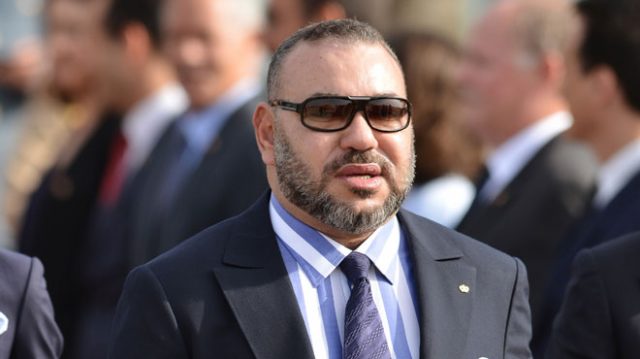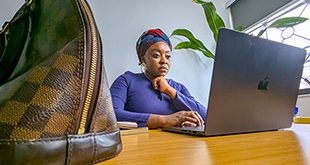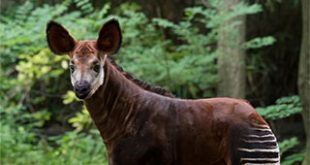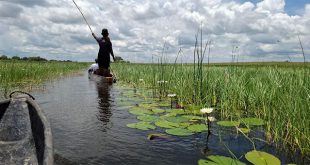
Rabat, Morocco | AFP | Here are some milestones in the two-decade reign of King Mohammed VI of Morocco and facts on the North African country:
– Breaks with father –
On July 23, 1999, Mohammed ascends the throne at age 35 on the death of his father Hassan II, who ruled for 38 years.
On July 30, he is officially crowned and gives his first speech, saying he wants to “lighten the burden of poverty” afflicting the majority of the population and promote “a new conception of authority”.
He breaks with his father’s record of oppression by allowing the return from exile of historic opposition leader Abraham Serfaty.
He also sacks all-powerful interior minister Driss Basri, who symbolised political repression and tight controls under his father’s reign.
Mohammed also travels to the traditionally restless Rif region in the north, which his father never visited, and opens the way for an amnesty for political prisoners.
The 2002 legislative elections are seen as a key step towards democracy after the election-rigging of the previous regime.
– Attacks in Casablanca, Marrakesh –
On May 16, 2003, a dozen suicide bombers kill 33 people and wound scores more in the economic capital of Casablanca. Most of the victims are Moroccan.
The parliament adopts an anti-terrorism law which considerably strengthens judicial and police powers.
Nearly 8,000 Islamists are arrested after the attacks.
In 2004, Mohammed announces religious reforms aimed at countering the rise of fundamentalist imams.
But on April 28, 2011, a bomb attack on a cafe in Marrakesh leaves 17 dead, including foreign tourists.
– Islamist victory –
On July 1, 2011, Moroccans vote massively at a referendum in favour of what Mohammed describes as a “comprehensive constitutional reform”.
Coming amid the Arab Spring pro-democracy uprisings rocking the region, the reform devolves many of his powers to the prime minister and parliament while preserving his political and religious pre-eminence.
On November 25, the Islamist Justice and Development Party (PJD) sweeps to victory in legislative elections, after decades in opposition, prompting comparisons with Egypt’s Muslim Brotherhood.
In January 2012, the king names PJD’s leader Abdelilah Benkirane as prime minister.
On October 7, 2016, the PJD comes out top in legislative elections but without winning a majority.
After six months of coalition talks end in failure, a new government led by Saad-Eddine El Othmani fills the most strategic ministerial posts with trusted men from the palace.
– Social unrest –
The Arab Spring sees tens of thousands of Moroccans join marches in February 2011 against the king’s reform efforts, with human rights groups also calling for more change.
In 2016, the Al-Hirak al-Shaabi (“Popular Movement”) emerges in the Rif region amid anger over the death of a fishmonger crushed in a rubbish truck as he tried to take back his swordfish catch seized by police.
It sparks protests to demand development in the long-marginalised ethnically Berber region, also at the heart of the 2011 uprising, and nationwide.
Scores of people are arrested and dozens later pardoned but jail sentences of up to 20 years for 42 Hirak members are upheld in April 2019, prompting protests by thousands.
Hirak figurehead Nasser Zefzafi and three others are founding guilty of “plotting to undermine the security of the state”.
– Inequalities –
Home to 35 million people, the country is experiencing an economic slowdown with growth expected to drop to 2.9 percent in 2019 compared with 4.1 percent in 2017, according to World Bank data.
Unemployment remains close to 10 percent and is particularly high among young people, the IMF says.
– Major projects –
Morocco has undertaken some major construction projects in recent years, including the massive Noor Power Station, hailed as the world’s largest concentrated solar power complex.
Inaugurated in 2016 near the town of Ouarzazate on the edge of the Sahara desert, it is part of a plan to raise renewable energy production to 42 percent of Morocco’s total power needs by 2020.
A high-speed railway line was opened in 2018, slashing by more than half the journey time between economic hubs Tangiers and Casablanca.
And Tanger Med port in northern Morocco added two new terminals in 2019, tripling its capacity to make it the Mediterranean’s biggest facility for maritime cargo.
– Western Sahara conflict –
Morocco has long been in conflict over its rule of the vast Western Sahara region to its south.
When Spanish colonisers pulled out in 1975, Morocco took over and the Algerian-backed Polisario Front picked up arms for independence.
The United Nations brokered a ceasefire in 1991 but a promised referendum to settle its status has yet to materialise.
– Religion –
Islam is the state religion and 99 percent of the population is Muslim, with the Catholic community numbering about 30,000.
With the title of “Commander of the Faithful”, King Mohammed VI has pushed for a tolerant Islam that ensures freedom of worship for Jews and foreign Christians.
– Tourist hub –
Tourism accounts for 10 percent of Morocco’s wealth but the number of foreign visitors has dropped following deadly jihadist attacks in the region, namely in Egypt and Tunisia.
Remittances from Moroccans working abroad and exports of phosphates and their by-products, including fertilisers, are other important sources of revenue.
 The Independent Uganda: You get the Truth we Pay the Price
The Independent Uganda: You get the Truth we Pay the Price





